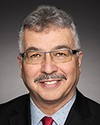Thank you.
Thank you, Ms. Jarvis, for your presentation. I'd really like to get a copy of your speaking notes, if that's possible.
In my opinion, of all the non-renewable resource development areas, the mining industry has really learned how to deal with aboriginal people, especially in the Northwest Territories. I've worked with regulatory boards and watched as assessments were made on environmental fronts and on the inclusion of aboriginal people. The mining industry, especially the diamond mines, has done an excellent job. They've become experts on how to consult with aboriginal communities. They involve aboriginal people right from the initial exploration stage. They sign impact benefit agreements. In the Northwest Territories, 50% of our boards are aboriginal. There are also community boards, regional boards that have hearings, so there's a lot of opportunity for input.
They've established environmental oversight committees that take frequent visits to the sites. They also bring elders to see first-hand what a mine looks like. For most people, and most aboriginal people, it's an education process that's required. That goes for all other areas, including oil and gas and others, because it's new for us. We have socio-economic agreements with the territorial government, which monitors hiring percentages. There are a number of things they monitor and talk about on a regular basis. They have literacy courses right on-site that help aboriginal people and others. It's not restricted to aboriginal people; it's for people with low literacy.
They do a lot of things right, in my opinion, and I think the opinion of many others who really took a good assessment of it. The end results are showing that we're having really good hiring levels in the communities. There are still huge pockets of unemployment in the north, but in the immediate area of the mines, it's working well. Regarding the courses that are available, the mines hire at least 95% of the people who graduate.
Is there a plan for further investment in the aboriginal population to help them with the ability to work in the mines, in terms of training, in terms of educating them to develop their skills? Right now most of the responsibility falls on the companies, and it is fairly costly, but I think the government has a role to play on that front too.




